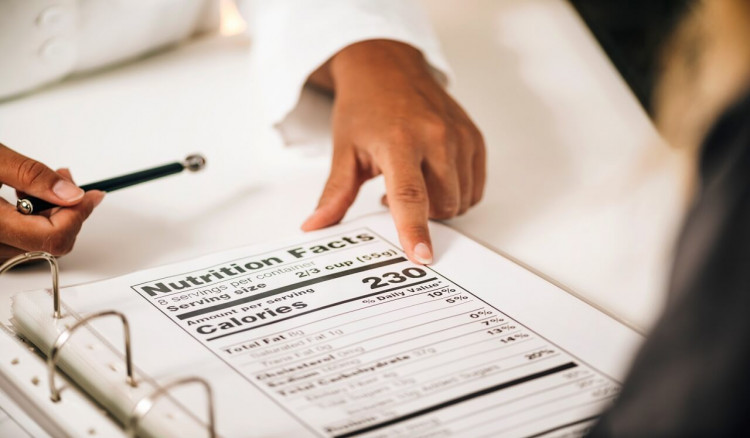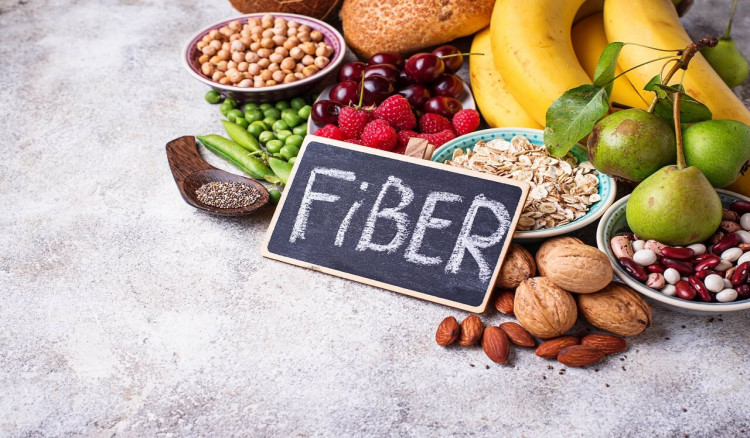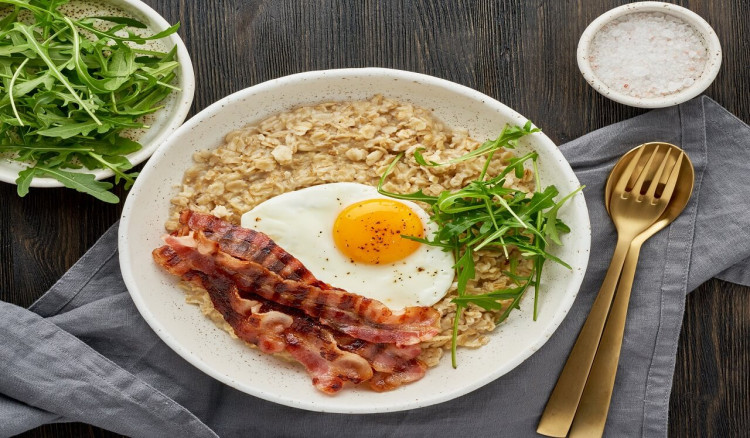
How to Read and Understand Food Labels
A food labeled “50% fat-free” sounds great until you realize that it means it is still 50% fat. It’s not always easy sorting out all the food claims as you are trudging through the grocery store aisles, trying to make healthy food choices. You may think you are doing a good job only to discover that you have been had.
A box of cookies may have a banner proclaiming it to be low in fat, but if you read the food label carefully, you discover that is loaded with lots of extras, such as added sugars that will throw your carbohydrate count out of whack. Reading food labels may seem impossible at first, but once you and your dietitian come up with a food plan that balances the amount of calories, fat, saturated fat, cholesterol, carbohydrate, fiber, and sodium in your diet, you may find food labels to be very helpful. Each packaged food item you buy will list all these nutrients on its label, and will take some of the guesswork out of meal planning for you. You just need to know what to look for.
What You Should Do To Understand Food Labels
When you shop, ignore the fancy claims on the front of a container. Instead, flip it over until you find the panel labeled “Nutrition Facts.” There you will find the serving size, the number of calories per serving, and the calories from the fat. Make sure to pay careful attention to the serving size. A bag of potato chips may seem like a low-fat, low-calorie dietary bargain until you realize that what you thought was one serving is actually 4 servings!
Reading and Understanding Food Labels
If you look at the sample label shown below, you will also notice additional information. Below the information on calories, you will also find information about the grams of fat, cholesterol, sodium and carbohydrate in one serving.
To the right of these values, you will find the % Daily Value. This tells you how much of the total recommended daily intake you will use up when you eat one serving of this food. These numbers assume you are eating 2,000 calories each day. The actual percentages may be higher or lower, depending on your total calorie intake. The label also tells you that 1 up of chili counts as 1 starch exchange, 3 lean-meat exchanges, and 1 vegetable exchange. This will help you in deciding whether the chili will fit into your meal plan.
However, in planning your meals, you might also take a closer look at the fat content in deciding whether this would be a good choice for your meal. The chili label, for example, tells you that if you are eating 2,000 calories each day, 1 serving, or 1 cup of chili will provide you with 8 grams of total fat, 3 grams of saturated fat, 72 calories from fat, and 13% of your recommended fat allowance for one day.
If you eat the whole can (2 servings), you would be eating 144 calories from fat. This amounts to 26% of your daily fat limit. This is not necessarily out of line, if you pay attention to what else you eat with the chili and what you eat during the rest of the day. If you eat your chili with a salad with reduced-fat or fat-free dressing, a whole-grain roll o slice of bread, and fruit o fat-free frozen yogurt for dessert, this could be a healthy meal choice.
Make sure you don’t garnish the chili with high-fat foods, such as cheddar cheese or sour cream, or eat it with tortilla chips and corn bread. Whatever you add must be accounted for. However, it is very easy to keep the chili meal to under 30% of your total fat intake for the day. Of course that means that your other meals and snacks combined should not exceed 70% of you total daily fat allowance.
In addition to watching your fat intake, you should also pay attention to the carbohydrate content of the food you eat. If you look at the chili label again, you’ll notice that one serving of chili provides 22 grams of carbohydrate or 7% of the total number of carbohydrates you are trying to eat each day (if you eat 2,000 calories a day, that is). If you look under the heading “Total Carbohydrate” on the left side of the panel, you can see that it is broken down into the different kinds of carbohydrate.
For the can of chili beans, the total carbohydrate includes 4 grams of sugars. All sugars are listed in the Nutrition Facts, whether they are added to the foods or occur naturally in a food. This means that the lactose that occurs naturally in yogurt and the fructose found naturally in fruit juice will show up as sugars on the food label.
As far as the chili is concerned, it does not supply much of your daily requirement for carbohydrate. Even 2 cups of chili will only give you 14% of your daily total requirement. However, if you add the low-fat choices mentioned above—salad, bread and fruit or frozen yogurt—your total carbohydrate will be closer to 26% of the recommended daily intake. This can make your meal a healthy choice.
In addition to information on the nutritional content of food, you may also find a variety of health claims, usually in bold letters on the front of the label. Food manufacturers can only make health claims that are supported by scientific research. For example, you may see labels that suggests the following:
- Calcium can prevent osteoporosis
- Fiber-containing foods such as grains, fruits and vegetables can help prevent cancer
- Fiber-containing foods such as fruits, vegetables and grain products can protect against heart disease
- Saturated fats can increase the risk of cancer
- Lack of folic acid in pregnant women can increase the risk of birth defects
Sometimes food manufacturers make claims about the nutritional value of their foods that can be more than a little confusing. For example, it is not always obvious what “all-natural” or “lite” means exactly. Here’s what some of these claims really mean:
- Calorie-free means that the product has less than 5 calories per servings. Make sure to pay attention to what constitutes a serving
- Low calorie means the food has less than 40 calories per serving
- Light or lite means that the food has one-third less calories or 50% less fat than the food with which it is being compared, usually the same product with the full amount of calories
- Less and reduced usually refer to a decreased amount of calories, fat, sugar, salt or other ingredient. To use this label, the food must be at least 25% lower in calories or other ingredients compared to the full-calorie or non-reduced version. When these words are used on a label, the actual percentages must also be included, as in “50% less salt” or “fat reduced by 25%”
- Cholesterol-free means that the food must contain less than 2mg of cholesterol and 2g or less of saturated fat per serving. Vegetable oils have no cholesterol, but are 100% fat
- Low cholesterol means that a food contains 20mg or less of cholesterol and 2g or less of saturated fat per serving
- Low-fat means that a food must have 3g or less of fat per serving
- Fat-free means that a food has less than 0.5g of fat per serving
- Low saturated fat means that a food has 1g or less of saturated fat per serving and not more than 15% of its calories from saturated fat
- Low sodium food contains 140mg or less of sodium per 100g of food. Sodium can be found in other forms besides ordinary table salt, or sodium chloride. For example, monosodium glutamate (MSG), sodium bicarbonate (baking soda), sodium nitrate and sodium citrate all contain sodium. Sodium also occurs naturally in some foods
- Very low sodium foods contain 35mg or less of sodium per 100g of food
- Sodium-free or salt-free means that a food has less than 5mg of sodium per 100g of food
- Light in salt means that an item has 50% less salt than the regular version
- Sugar-free means that the item has less than 0.5g of sugar per serving. It can contain artificial sweeteners, however
- No Added Sugar, Without Added Sugar, Dietetic, No Added Fat, and similar phrases really have no meaning. A phrase like this simply means that something has been changed or replaced. It could contain less sugar, less fat, less salt, or less cholesterol than the regular version of the same product. This label can be misleading. The only way to tell for sure what it means is to read the Nutrition Facts label. You may think a package of dietetic cookies has no calories, but it may very well be that the only thing missing is salt. It could have just as much sugar or fat as the regular version.
- Natural can also be misleading. When used on meat and poultry labels, it means that no chemical preservatives, hormones, or similar substances have been added. But on other food labels, it has no particular meaning.
- Fresh can only be used to describe a raw food that has not been frozen, heat processed or preserved in some way.
What to Look for When Shopping For Food
When shopping for the foods you will eat, it pays to read the food labels. But how do you know what you should buy? It can all seem very confusing. Here are some tips to single out those food items that will fit in well with your healthy living plan.
- Bread. Look for low-fat varieties that list whole grains as the first ingredient on the label
- Cereal. Choose brands that list whole grains first on the label and contain 3 or more grams of dietary fiber per serving, 1 gram or less of fat per serving, and 5 grams or less of sugar per serving.
- Crackers and snack foods. Look for whole grains as the first ingredient listed on the label and 2 grams or less of fat per serving. Usually 5 to 10 crackers constitute a serving. Good examples of low-fat snacks are pretzels or plain popcorn that has been air-popped with no added cheese or butter and that contains 2 grams of fat or less per serving. Try to keep sodium content under 400 milligrams per serving
- Rice, pasta and wholegrains. Use converted, brown, or wild rice of any type (watch out for high-fat flavored rice mixes). Look for fresh or dried pasta with no added filling, preferably those made with wholegrain flours. Try to avoid pastas or noodles that contain eggs and fat
- Frozen desserts. Look for those that contain 3 grams or less of fat per 4-ounce serving (half cup). Low-fat frozen yogurt, low-or-fat-free ice cream, and frozen fruit juice bars with less than 70 calories per bar are all good choices. Avoid food made with cream or coconut, coconut milk, or coconut oil, which are all high in saturated fat. Count the carbohydrates as part of the meal’s allotment
- Milk and yogurt. Choose fat-free or 1% milk, buttermilk made from fat-free milk, and low-fat and non-fat yogurt that is artificially sweetened
- Cheese. Look for fat-free milk and reduce-fat cheeses that contains less than 6 grams of fat per ounce. Good choices include fat-free mozzarella and low-fat Farmer’s cheeses, fat-free or low-fat ricotta cheese, and fat-free or 1% fat cottage cheese
- Red meat. Beef, veal and pork are all labeled by the animal, body part, and type of cut. For example, “pork loin chops” are chops from the loin of the pig. The grade of meat is based on its fat content. Prime cut is the highest in fat, and Choice or Select is lower in fat. Pick lower fat grades of meat, such as Choice and Select, and choose lean body parts, such as round or sirloin beef, tenderloin pork, or leg of lamb
- Luncheon meat. When shopping for luncheon meats, choose lean or 95% fat-free meats. Look for those that contain 30 to 55 calories per ounce and contain less than 3 grams of fat per ounce
- Poultry. Breast meat is the best choice, because it contains the least amount of fat. Removing the skin before cooking will cut the fat content by 50% to 75% and the cholesterol content by 12%. Salami, bologna, hot dogs and bacon made from chicken and turkey aren’t necessarily low in fat. In fact, the fat content can be quite high. Check the label and choose those that are less than 30% fat
- Seafood. Choose fresh fish and shellfish. Look for clear eyes, red gills and shiny skin and avoid those with a “fishy” smell. Shrimp is usually shipped frozen to preserve freshness. When choosing canned fish, look for fish packed in water or rinse the oil of thoroughly. Look for low amounts of sodium.
- Vegetables. Your best bets are fresh and frozen vegetables without any sauces or flavorings. When using canned vegetables, drain and rinse them thoroughly to remove excess sodium
- Fruit and fruit juice. Choose fresh, frozen or dried fruit, preferably without any added sugar. When buying juice, look for those that are 100% pure fruit juice. Fruit juices made from concentrate can come fresh, canned, bottled, or frozen. Labels that say “made with 100% juice” or “juice drink” are not 100% juice themselves and may contain some ingredients. Check the label
- Margarine and oil. Choose olive, canola, soybean, safflower, sesame, sunflower or corn oils. Look for those brands that list these or “vegetable oil” first on the label and that contain 1 gram or less of saturated fat per serving (usually 1 tablespoon). Use fat sparingly.
- Salad dressings. Choose reduced-calorie and fat-free types of dressings
- Sour cream and cream cheese. Look for fat-free or light types of sour cream or cream cheese. Instead of regular sour cream, try using fat-free or low-fat yogurt, either plain or flavored with chives, herbs and spices
- Soup. Try low-sodium, reduced-fat varieties. In preparing cream soups, use fat-free or low-fat milk or water
- Cookies and cakes. Look for brands that contain 3 grams or less of fat per 100 calories. Angel food cake is made without fat and has no cholesterol. When making cakes, you can cut out cholesterol by using egg substitutes. You can substitute applesauce or fat-free yogurt for oil in some recipes. Many cake mixes now include directions for low-fat and low-cholesterol variations. Again, count the carbohydrates as part of the meal’s allotment
Sources and References
The Diabetes Problem Solver—Quick Answers to Your Questions About Treatment and Self-Care by Nancy Touchette
Food Label Use and Awareness of Nutritional Information and Recommendations Among Persons with Chronic Disease by J Lewis, D Lee et al






Share This Article: